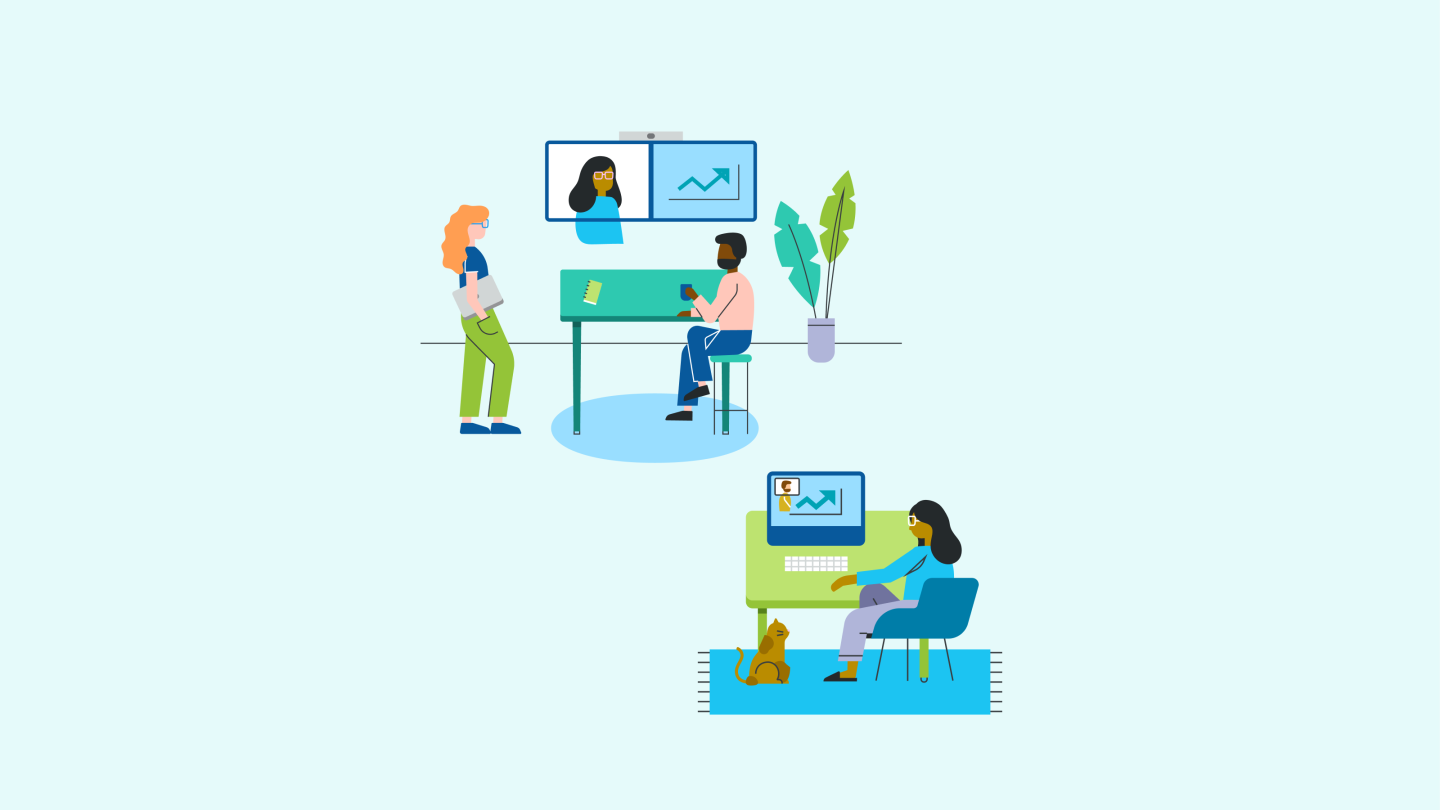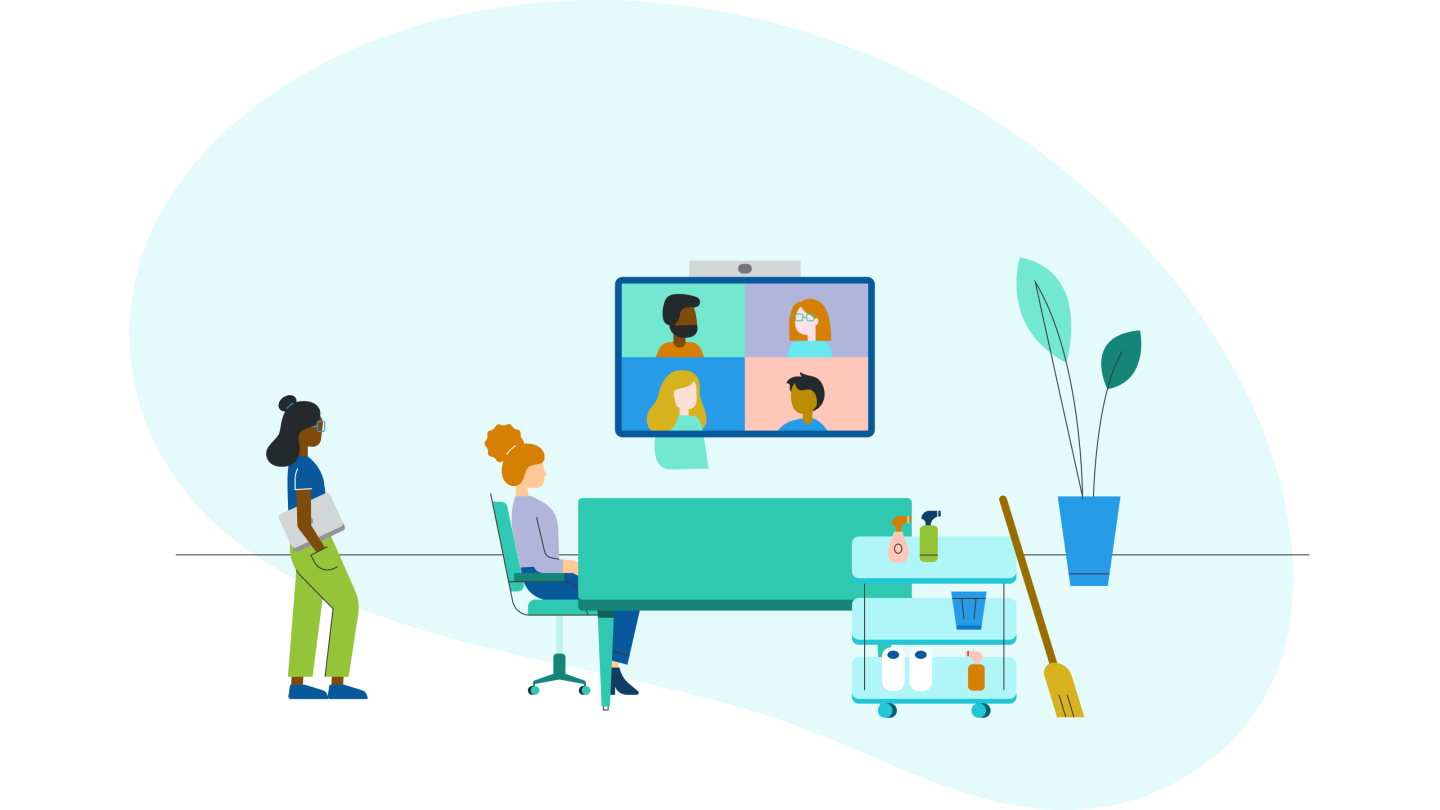Solving the Hybrid Workplace
The main challenge we identified for companies in the near future will be supporting a workforce split between the home office and the main office. We call this the Hybrid Workplace. There is a need and urge to get back to the office, but keeping employees safe and dispersed is the primary concern. Many companies figured out how to work 100% from the home office as an initial response to the pandemic, but creating equal opportunities and involvement for all in a Hybrid Workplace requires culture change, more planning and better tools.
The good news is this may be an opportunity for your business to stay competitive beyond
just handling the current situation. While your other investments related to the pandemic may strictly target safety, moving to cloud, adopting a mature home office strategy and enabling the collaboration spaces in the office has a ton of ripple effects:
Recruit the best talent regardless of where they live. Save the environment while saving
travel costs. Give your employees better work-life balance. Stay productive and collaborative wherever you are, in high definition. Enable your offices with smarter services across buildings, sensors and digital interfaces.
Contents
Solving the hybrid workplace
keeping your people safe
Scenarios from a Hybrid Workplace
Moving Forward












